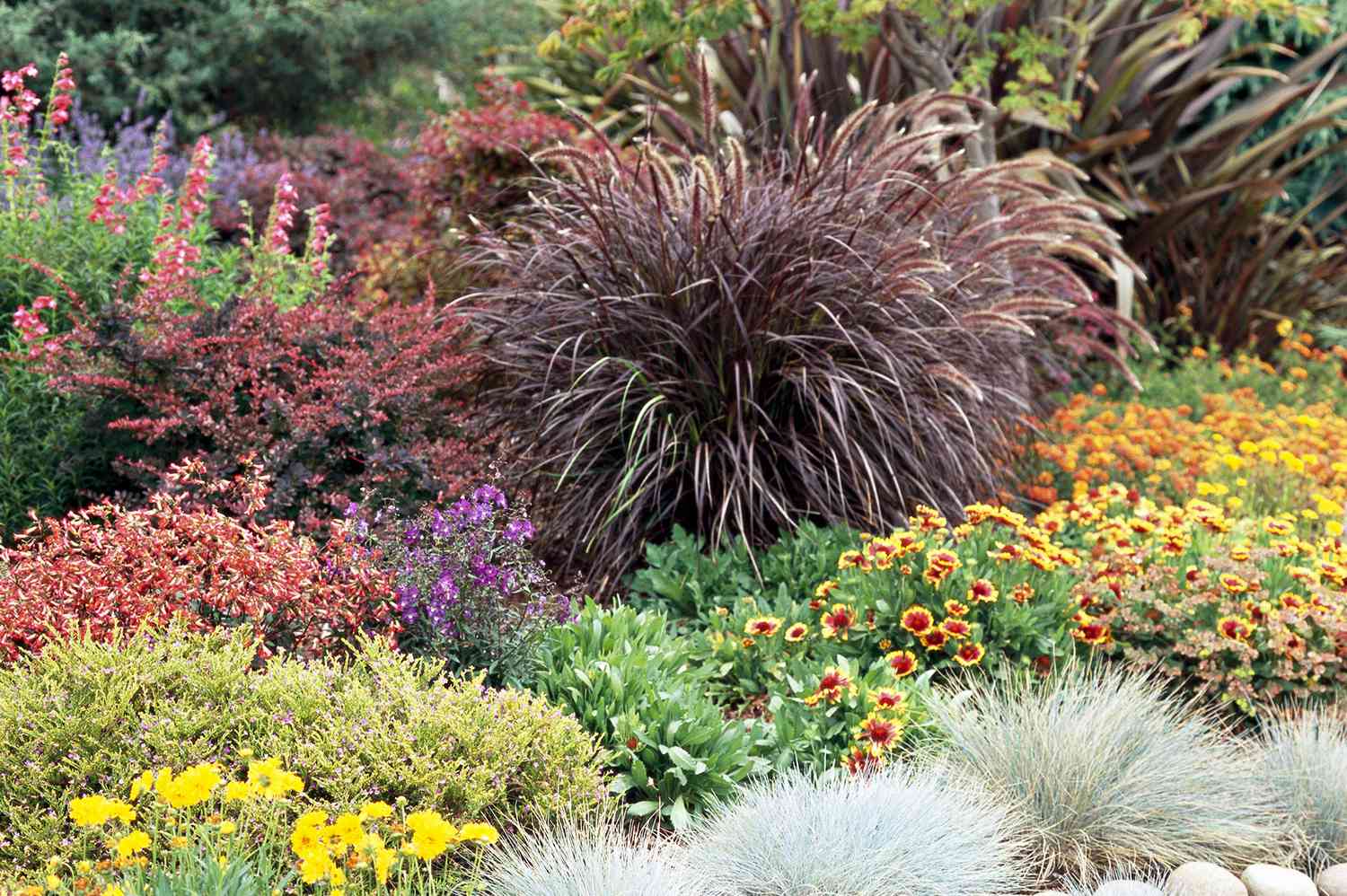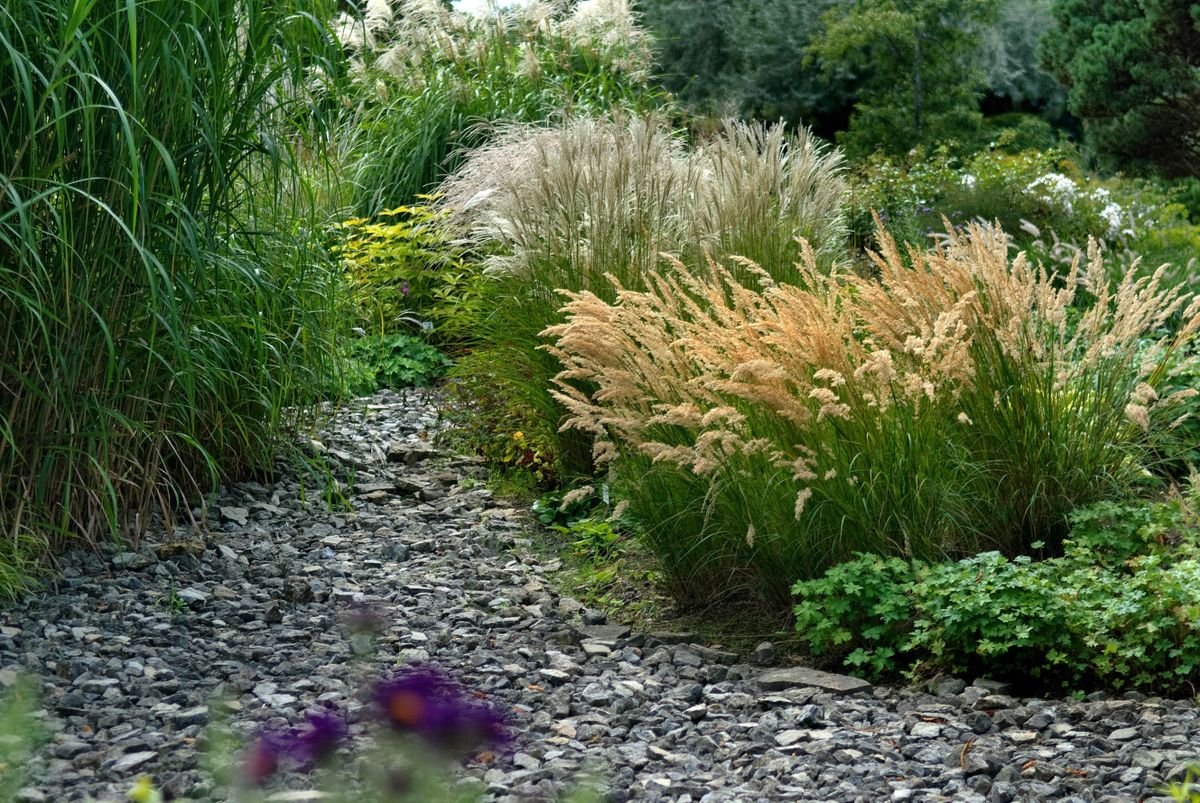Choosing the Right Time for Optimal Growth
Timing is crucial when it comes to planting decorative grass. The right planting time can make all the difference in the success of your ornamental grass garden. When to plant decorative grass depends on various factors, including climate, soil temperature, and weather conditions. In regions with mild winters, decorative grass can be planted in the fall or early spring, when the soil is cool and there is ample moisture. This allows the grass to establish itself before the heat of summer or the cold of winter sets in. In areas with harsh winters, it’s best to plant in the spring, after the last frost, when the soil has warmed up and the risk of frost has passed. In regions with hot summers, planting in the fall or early spring can help the grass establish itself before the heat sets in. By understanding the specific needs of your climate and planting at the right time, you can give your decorative grass the best chance to thrive. Remember, knowing when to plant decorative grass is key to its success, so take the time to research and plan accordingly.
Understanding Your Local Climate and Its Effects
Determining your local climate zone is crucial when it comes to planting decorative grass. Different climate zones have specific requirements for planting decorative grass, including frost dates, average temperatures, and moisture levels. To determine your local climate zone, you can consult the USDA Plant Hardiness Zone Map or the Sunset Climate Zone Map. These maps divide the country into different zones based on average annual extreme minimum temperatures and other climate factors. Once you know your climate zone, you can research the specific requirements for planting decorative grass in your area. For example, if you live in a region with harsh winters, you’ll want to plant decorative grass in the spring, after the last frost, when the soil has warmed up and the risk of frost has passed. In regions with hot summers, planting in the fall or early spring can help the grass establish itself before the heat sets in. By understanding your local climate and its effects, you can choose the right type of decorative grass for your area and plant it at the right time for optimal growth.
How to Prepare Your Soil for Decorative Grass
Preparing the soil is a crucial step in planting decorative grass. The right soil conditions can make all the difference in the success of your ornamental grass garden. Before planting, it’s essential to test the pH level of your soil to ensure it’s suitable for decorative grass. Most ornamental grasses prefer a slightly acidic to neutral soil pH, ranging from 6.0 to 7.0. If your soil is too acidic or alkaline, you can amend it with organic matter such as compost or well-rotted manure. Additionally, remove any debris, weeds, and rocks from the planting area to prevent competition and ensure good drainage. Adding organic matter can also help improve soil structure, increase water retention, and provide essential nutrients for healthy growth. By preparing your soil properly, you can give your decorative grass the best chance to thrive and enjoy optimal growth. Remember, when to plant decorative grass is also dependent on soil preparation, so make sure to plan accordingly.
The Role of Light and Shade in Decorative Grass Growth
Light and shade play a crucial role in the growth and development of decorative grass. Different types of ornamental grasses have varying requirements for sunlight and shade, and understanding these needs is essential for optimal growth. For example, pampas grass and fountain grass thrive in full sun, requiring at least six hours of direct sunlight per day. On the other hand, blue oat grass and feather reed grass prefer partial shade, especially in warmer climates. When planting decorative grass, it’s essential to consider the amount of sunlight and shade the area receives. If you’re planting in a shaded area, choose a grass variety that tolerates shade, and if you’re planting in a sunny area, choose a variety that thrives in full sun. Additionally, consider the time of day the area receives sunlight, as some grasses may require morning sun and afternoon shade. By understanding the light and shade requirements of your decorative grass, you can create a thriving and beautiful landscape. Remember, when to plant decorative grass also depends on the light and shade conditions, so plan accordingly to ensure optimal growth.
Watering and Maintenance Tips for Healthy Growth
Proper watering and maintenance are crucial for the healthy growth of decorative grass. Overwatering is a common mistake that can lead to root rot and other problems, so it’s essential to water decorative grass correctly. Water your decorative grass deeply once or twice a week, depending on the weather conditions, to encourage deep root growth. Avoid frequent shallow watering, as this can lead to weak and shallow roots. Additionally, fertilize your decorative grass annually with a balanced fertilizer to provide essential nutrients for healthy growth. Pruning is also an essential maintenance task for decorative grass. Prune your grass in the late winter or early spring to remove dead foliage and encourage new growth. When pruning, use sharp scissors or pruning shears to avoid damaging the grass. By following these watering and maintenance tips, you can ensure your decorative grass remains healthy and thriving. Remember, when to plant decorative grass is also dependent on the watering and maintenance schedule, so plan accordingly to ensure optimal growth.
Popular Types of Decorative Grass and Their Planting Requirements
With numerous types of decorative grass available, it’s essential to choose the right one for your landscape design. Pampas grass, for instance, is a popular choice for its showy plumes and ability to grow up to 10 feet tall. When to plant decorative grass like pampas grass depends on your location, but generally, it’s best to plant in the spring or fall when the weather is mild. Blue oat grass, on the other hand, is a low-maintenance option that thrives in well-draining soil and full sun. Fountain grass, with its bottlebrush-like plumes, prefers well-draining soil and partial shade. Other popular types of decorative grass include feather reed grass, switch grass, and little bluestem. Each type of decorative grass has its unique characteristics, growth habits, and planting requirements. By understanding the specific needs of each type, you can choose the right decorative grass for your landscape design and ensure optimal growth. Remember to consider factors like climate, soil type, and sunlight exposure when selecting and planting decorative grass.
Avoiding Common Mistakes When Planting Decorative Grass
When it comes to planting decorative grass, there are several common mistakes to avoid to ensure optimal growth and a stunning landscape. One of the most critical mistakes is planting at the wrong time. Knowing when to plant decorative grass is crucial, as it can affect germination and growth. Planting in extreme weather conditions, such as during a heatwave or when the soil is waterlogged, can also hinder growth. Inadequate soil preparation is another common mistake, which can lead to poor drainage, nutrient deficiencies, and increased susceptibility to pests and diseases. Insufficient watering, especially during the first few weeks after planting, can cause stress to the grass, making it more prone to disease and pests. Additionally, failing to prune decorative grass regularly can lead to overgrowth, reducing its aesthetic appeal. By avoiding these common mistakes, you can ensure your decorative grass thrives and adds beauty and texture to your landscape design. Remember, understanding the specific needs of your decorative grass and following proper planting and maintenance techniques are key to achieving a stunning landscape.
Creating a Stunning Landscape with Decorative Grass
With the right knowledge and planning, decorative grass can elevate your landscape design and add a touch of elegance to your outdoor space. When it comes to incorporating decorative grass into your landscape, the possibilities are endless. One popular approach is to use decorative grass as a border, adding a natural and effortless touch to your garden or yard. You can also use decorative grass to create a focal point, drawing the eye to a specific area of your landscape. Combining decorative grass with other plants, such as flowers or shrubs, can add texture and depth to your landscape design. Additionally, decorative grass can be used to create a sense of movement and flow, guiding the eye through your outdoor space. By understanding when to plant decorative grass and following proper planting and maintenance techniques, you can create a stunning landscape that showcases the beauty and versatility of ornamental grasses. Whether you’re looking to add a pop of color, create a sense of drama, or simply enhance your outdoor space, decorative grass is a versatile and effective option.





:max_bytes(150000):strip_icc()/plume-grass---pennisetum-alopecuroides-467572634-6d9fed0ba2684ddca2d78f683630259a.jpg)
:max_bytes(150000):strip_icc()/GettyImages-126555282-56ab1e005f9b58b7d009402c.jpg)